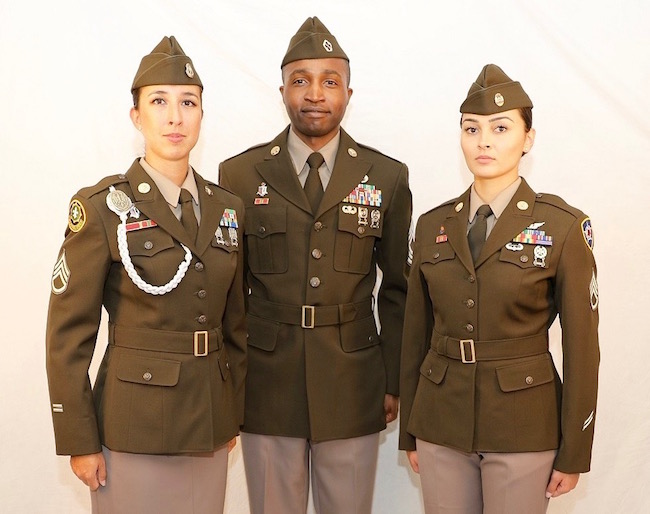Starting in 2020 the U.S. Army will be introducing a new uniform. The redesign, which has been in the works for two years, made its debut at several 2019 Veterans Day events. “The Army Greens uniform represents our tradition and history,” says Sergeant Major Daniel Dailey of the Army. “It serves as a connection of past generations of soldiers to those working to secure America’s freedom today ― our next greatest generation of soldiers.” The redesign harkens back to WWII, when the uniform was referred to as “Pinks and Greens” – pink for the rose-tinted khaki trousers and green for the olive coloured jacket. The blue uniform, currently issued to the army, was influenced by George Washington’s Continental Army and the Union Army from the Civil War. In each of these cases, the design borrows elements from regalia worn during successful periods of the army’s history.
When developing new concepts, designers often look to the past for inspiration. The automotive industry is a prime example of how companies are reimagining car classics from yesteryear. Recent iterations of the Volkswagen Beetle and Ford Thunderbird rely heavily on the models that were popular with the public decades ago. However, each of these redesigns incorporate modifications to the original vehicles that make them unique and not just copies of the originals.
Colour is an important component of any design. In the case of army uniforms, or for that matter any type of uniform, it is a key defining element. Colours reflect the aspirations of a given time, movement or demographic. And because colour preferences are forever evolving, it is essential that one remains sensitive to how it informs a particular project. The failure to noticeably update the design and colours of the new Army Greens uniform may ultimately jeopardize its success. Many will see the redesign as being overly nostalgic. Military forces are not what they were in the late 1930s, technology has dramatically changed the art and execution of warfare. The clothing, training, equipment and methodologies used by today’s soldiers are radically improved. Do these new uniforms accurately represent today’s army? Or is this a blatant attempt to romanticize the past?
